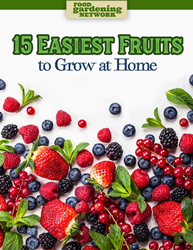The University of California Master Gardeners was begun in 1980 to help home gardeners with science-based advice on horticultural practices. The Napa County chapter was formed in 1995.
Today’s members have diverse life experiences and interests, but all have curiosity and the desire to learn as prominent personality traits. We all have different approaches to gardening: Some of us have exhibition-quality landscapes, while other gardens are definitely works in progress.
The membership is heterogeneous and (politely) opinionated, but I have observed that most of us follow some similar rules. I have adopted these guidelines myself, and my backyard is the better for it. I call them “The Five Rules of Gardening.”
The first rule, from which all else flows, is “Put the right plant in the right place.” Let’s imagine you have seen an irresistible rose that you know would be perfect in your yard. Let’s also imagine that your yard is mostly engulfed in shadow, because you have a handsome stand of trees there.
People are also reading…
Unless that rose receives six hours of sunlight a day, it will not prosper. Even roses that survive in shade would do much better in full sun.
Other examples abound: the Japanese anemone in my front yard that shriveled when the utility company pruned my camphor tree, exposing it too much sun, especially in a heat wave; or the salvia that likes well-drained soil but gets planted near a bog. Read the planting instructions on your seed packets and the tags on your plants and follow them.
The second rule is “Compost.” You can buy compost from Napa’s waste management service, but Napa County Master Gardeners offer several compost workshops throughout the year to show you how to turn your own kitchen and garden scraps into compost and improve your soil quality.
Adding compost to the soil reduces compaction, so nutrients and water can reach the roots and you can water less. It also improves soil health overall. I repot my container plants once a year using a mix of soil and compost, and the results are immediate. The plants look fuller and healthier.
Compost supports the microorganisms that transform it into humus, the dark organic matter that results from decomposition. Humus enhances the health of your garden, and you can make it at home for free.
“Mulch, mulch, mulch” is the third rule. Your mulch can be as simple as leftover compost, grass clippings or dead leaves that will eventually rot into compost You can also buy mulch, but it’s surprising what you can find in your yard, especially if you are a gardener who doesn’t mind a little clutter here and there.
Mulch keeps plant roots cool during a heat wave and reduces water evaporation. It suppresses weed growth (and I know a weed is just a flower in the wrong place, but weeds compete for nutrients). Mulch prevents erosion, and it can even enhance the appearance of your garden.
The fourth rule is “Do not be afraid to prune.” Many people are timid about pruning. They are so thrilled to have grown a plant that is lush and green, and they are afraid they will harm it.
Most plants benefit from judicious trimming. I once let an apple tree run amok, resulting in falling branches and less fruit. Fixing the problem cost me more than following a regular pruning schedule would have.
You can find directions for pruning your plants on the UC Master Gardeners of Napa County website, under Healthy Garden Tips/Pruning. A healthy tree enhances your property value; sensible pruning protects your investment. If the task seems too daunting, call a professional.
And here’s the fifth and final rule: “Plant natives whenever possible.” California native plants are adapted to our climate, generally require less water and attract native pollinators. They are hardy and usually pest resistant. The bees, butterflies and hummingbirds they invite add to the pleasure of being in the garden. If you plant native milkweed (Asclepias californica), you can help save the monarch butterfly from extinction.
I should probably add a sixth rule: “Resist the landscape inferiority complex.” I once had a neighbor whose garden was so immaculate and lovely that I suspected she told any shrubs and flowers that refused to put forth their best efforts, “If you don’t shape up right this minute, I am sending you over to Cindy’s.”
On the other hand, I know another gardener whose yard is hardly a model of tidiness, but she has a wonderful plant selection in various stages of development. There is always something going on in her landscape, and isn’t that the main reason we garden? It’s fascinating and fun, and the results are beautiful.
Food-Growing Forum: Join UC Master Gardeners on Sunday, Jan. 8, from 2 to 4 p.m. for a forum on pruning fruit trees. Knowing how, when and why to prune your fruit trees will help you reap bumper crops and keep your trees healthy and long-lived. Learn how to prune apple, pear, plum and peach trees. Participation in this free workshop is limited. The location will be provided after registration. Register at https://ucanr.edu/2023FoodForumJan
Workshop: Join UC Master Gardeners of Napa County for a workshop on “Winter Rose Care & Pruning” on Saturday, Jan. 14, from 10 a.m. to noon via Zoom. Learn how to prepare your roses for the upcoming growing season and how to choose the right rose for the right place in your garden. Attendees will be invited to join a hands-on pruning workshop at Napa’s Fuller Park rose garden on Thursday, Jan. 19, from 10 a.m. to noon to practice pruning one-on-one with a Master Gardener. Register at https://ucanr.edu/2023WinterRoseCare
Workshop: Join UC Master Gardeners of Napa County for a workshop on “Garden – Garden Ergonomics: Using the Right Tool the Right Way,” on Saturday, Jan. 28, from 10 am to noon, at Las Flores Community Center, 4300 Linda Vista Ave., Napa. Learn proper body mechanics and how to avoid common gardening habits or activities that are risk factories for injury.
Help Desk: The Master Gardener Help Desk is available to answer your garden questions on Mondays and Fridays from 10 a.m. until 1 p.m. Send your questions to mastergardeners@countyofnapa.org. Include your name, address, phone number and a brief description of the problem. For best results, attach a photo of the plant. You may also leave a voicemail message with the same information at 707-253-4143.
Gardening and spending time in nature has been proven to relieve the pressure and stress that comes from everyday life.
With winter’s official start less than two weeks away, it’s rose pruning time.

A great lesson for all gardeners: stick with plants suited to local conditions. Given climate change, we should also be mindful of a plant’s prospects for long-term success.

Perusing garden books, you can travel the world’s great gardens without leaving your chair, and learn how to make your personal landscape healthier and more sustainable.
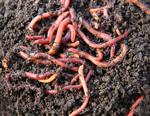
Fall is the time to get your worm compost bins in order.
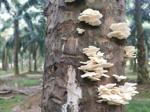
Mycoremediation—using fungi to repair environments—is a new area of mycology (the study of fungus) that shows promise.
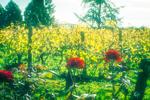
Roses blooming at the end of vine rows in spring and summer is a sight almost as familiar as the winter mustard bloom. But why do grape growers plant them?
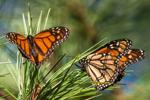
The monarch butterfly has suffered a huge decline all over the U.S. One way to help them is to plant more milkweed so they have food as they travel through California.
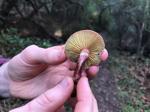
Mushroom hunting is fun, writes Master Gardener Cindy Watter. “Educate yourself and take a guided walk.”

Here’s a guide to growing Jupiter’s Beard in your garden.
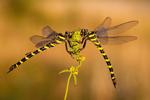
According to the UC Davis Bug Squad, insects contribute an estimated $57 million annually to the U.S. economy, yet many are close to being endangered species. Here’s how to help them.
What weed killed Abraham Lincon’s mother? UC Master Gardener Penny Pawl explores topic of deadly plants.

The main thing is to enjoy your garden. It should be a place for relaxation; don’t worry about everything looking perfect.
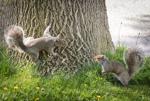
Napa County Master Gardener Penny Pawl installed an owl box in her yard, and a mother squirrel decided it was a fine place to raise her kits.
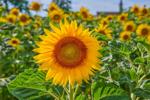
Easy to grow, sunflowers are called the “clever plants” by UC Davis researcher Dr. Stacy Harmer.
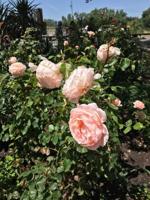
Lessons noted from the gardens at Saintsbury Winery in Carneros.
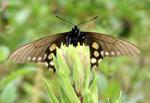
Master Gardener Penny Pawl explores the relationship between the Dutchman’s pipevine, found in Napa, and caterpillars that safely consume the poisonous plant, which in turn makes the butterflies toxic to predators.

Keep your soil covered, the UC Master Gardeners of Napa County say. But what does covering the soil mean? Why do we want to cover it? And with what?
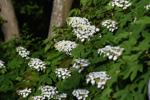
Most hydrangeas are real water gluttons, but the oakleaf hydrangea is not only dramatic and easy to care for, it requires very little water.

Last winter I was pleased to read that a fifth-grade student, Knox Van Emst, had read the entire series of Hardy Boys novels. He made excellen…
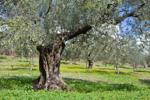
It has been said that olive trees thrive with drought, sun, rocky soil, silence and solitude. They also need a Mediterranean climate. Napa Valley provides it all.
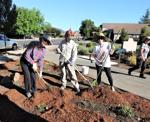
The UC Master Gardeners of Napa County have installed a new learning garden and the community is invited to the opening day on Sunday.

Every gardener has the ability to have a positive and significant influence on the earth’s warming climate. Improving soil by adding organic material like compost helps the life in earth’s over-tilled and compacted soil.

Here’s a useful step by step guide to planting a fruit tree.

Want to know about the state of your soil? Bury cotton underwear and see what, if anything, eats it. (In Australia, it was kangaroos.)

How can you improve your soil and manage pests? UC researchers recommend integrated pest management.
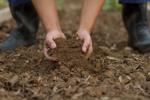
Heal the earth by healing the soil? Are we really able to slow global warming by manipulating dirt?
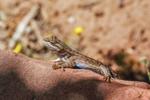
Meet soldier flies, good guys to have in your compost bin.

The Euphorbia family contains more than 2,000 different plants, including perennials, annuals, biannuals and many succulents.

Why bother growing your own lettuce? Because there are so many wonderful types, many of which we never see in stores.
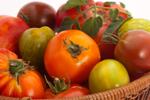
Get ready for summer tomatoes at the Master Gardeners annual sale.

The UC Master Gardeners of Napa County are partnering with Ole Health to present a new gardening program for the community.
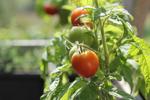
With spring planting on the horizon, the Master Gardeners have some tips for growing tomatoes in containers.

Since 1999, Debbie Stevens has held the title as Napa’s Worm Lady.
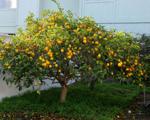
Access to Meyer lemons is a good reason to remain in California, writes Master Gardener Cindy Watter.

There are many flowering trees in Napa’s Fuller Park, and this spring would be a good time to see them in bloom.
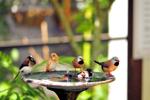
Many gardeners spend a good bit of time trying to protect plants from wildlife, but Susanne von Roseberg feels that your garden and the planet will be enriched by encouraging wildlife to visit your garden.

If we want to reduce or even just stabilize temperatures in this time of rapid climate change, keeping our urban forests intact and thriving is an action we all can take.
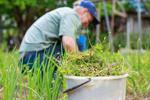
Snails, slugs and weeds: Master Gardeners provides a list of things to think about in your garden in February.
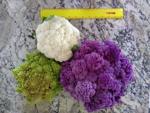
In 2021 the Napa Master Gardeners’ field trials group decided to grow cauliflower, not just once but twice. Here are their results.
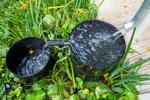
It all started with the water bill. That is how Linda St. Claire, a former UC Master Gardener of Napa County, described her conversion to storing rainwater to use in her garden.

As the new year gets underway, we start dreaming of what our gardens will be like in the spring and summer. Even if it is cold and wet there are things you can start planning and doing.
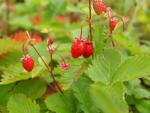
January is a great time of year to plant strawberries in Napa Valley, regardless of online recommendations to plant them in the spring, late summer or early fall.

Wet and cool weather interspersed with warm sunny days, is perfect for fungi and slime mold to complete their life cycles, and they are turning up in gardens in Napa County.

The ficus plants that many people grow indoors are actually tropical trees. They are a different species from Ficus carica, the edible fig. The ficus we eat is from temperate areas of the world and does well outdoors in Napa Valley.
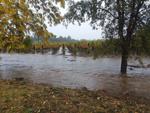
October’s atmospheric river rainfall is likely a preview of what is to come. As gardeners, that means we have to simultaneously be prepared for drought and flood.

Some invasive plants maybe seem easy to grow in Napa, but they can also pose a threat wildlands, native plants, endangered species, wildlife and livestock.
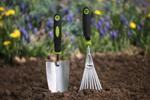
Fall is a great time to try sheet composting in your yard. Napa County Master Gardener Penny Pawl explains what it is and how to do it.
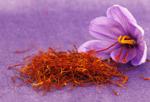
Napa County Master Gardeners explore of the pleasures of gardening, which include planting crops that are relatively easy to grow, yet expensive or hard to find in stores.

Three years ago, I wrote an article about creating African keyhole worm-compost bins in my garden beds. This summer it was time to harvest com…
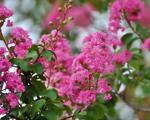
Crape myrtle trees grow well in Napa’s climate and are great to include in a drought-tolerant landscape.
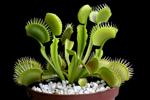
Plants do respond to touch, processes knows as thigmotropism and thigmomorphogenesis.

With the changes in weather, rainfall and temperatures, does it make sense to plant a fall garden? Napa County Master Gardeners say yes, with some changes.

What trees are best to plant to help with climate change? Master Gardeners of Napa County have suggestions.

September is the time in Napa County to plant cool-season vegetables, fall annual flowers and — as soon as the rains start — California native plants. It’s also the moment to plant spring-flowering bulbs.

Is it really best to buy the biggest tree you can afford? A veteran Master Gardener provides the answer to this and other myths about trees.

Mast-seeding plants create more effective habitat in your garden, improve the diets of pigs and chickens and may increase your chances of seeing interesting birds. So what is mast-seeding?
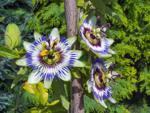
While native plants may be preferable as a butterfly habitat, the passionflower is an exception. Butterflies love them.
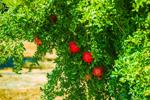
The Napa County Master Gardeners provide a primer for growing your own pomegranates.

July is time to relax and enjoy everything you’ve accomplished in your garden, and it’s also time for a midsummer checkup to make sure that everything will continue to do well.

Ceanothus, native to California and very drought-tolerant once established, is ideal for Napa Valley gardens.
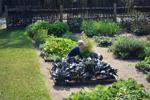
One way to garden during a drought is to try the method of French intensive gardening.

Gardening is a great way to grow food, connect with nature and stay physically active for adults and children. Kids, however, don’t have the same abilities and attention span as adults, so here are tips to keep in mind if you’re gardening with young people or designing a garden for them.
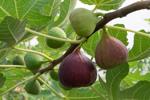
No matter where you live in Napa County, you’ll be able to find a variety of fig tree that’s right for your microclimate.

One of the pleasures of having a large, messy vegetable garden is that plants that get ignored past their useful life as an edible still have value.
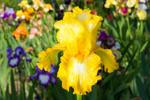
Colorful bearded iris are easy guests in most gardens, and they reproduce rapidly.
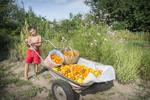
It’s not too late to have a successful summer vegetable garden. Early June is still a great time to plant some tomatoes, peppers, eggplants, beans, chard, cucumbers, melons, squash and pumpkins.
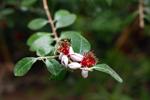
Flowering trees are really one of the easiest and most rewarding ways to beautify your yard. Napa County Master Gardeners have some suggestions that will thrive.
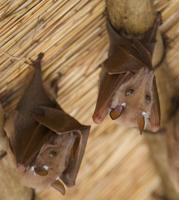
We have bats in Napa County and we should be happy they are here. One bat can eat as many as 3,000 insects in one night.
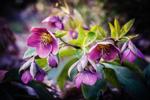
Hellebores stay green all year, bloom in the winter and don’t take a lot of water to keep them happy.
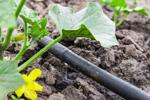
As a good steward of the planet, what can you do to better prepare your garden to use less water?
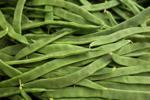
If you haven’t eaten Romano green beans fresh from the garden, you can’t imagine how delicious they are, UC Master Gardener Donna Woodward writes.

Mushrooms and toadstools are all fungi working for you by breaking down decaying materials and adding to the health of your soil.

Few vegetables can boast the versatility of the beet, which is effectively two vegetables in one. Here are tips for growing them successfully.

Pansies and primroses are some of the hardy flowers that can brighten a winter and early spring landscape.
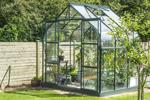
If you decide to build a greenhouse, be sure to do a lot of research. Just what plants do you plan to put in the greenhouse? Will you try to grow crops?

The Solanaceae, or nightshade family, is a large one. Just as our own families can include the kindly grandma as well as the femme fatale, nightshade plants include potatoes and tomatoes, as well as tobacco, belladonna and jimson weed.
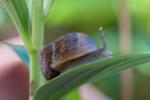
Early spring is the time of year when snails and slugs appear. They love to chew on tender young foliage. If your garden suddenly displays leaves with holes and ragged edges, chances are you have slugs and/or snails

The Napa Master Gardeners have moved their popular, annual tomato sale online this year.
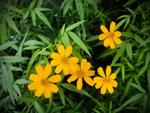
The Mexican marigold was unknown to gardeners in the U.S. until 1880. John and Sara Lemmon, a husband-and-wife team of botanists, discovered it while camping in Arizona on their honeymoon.

UC Master Gardeners of Napa County recommend taking note of how climate change is affecting your garden for everything from frost dates to when and how much rain falls.

“We all need to keep learning, discovering new perspectives and combining the best ideas and practices from the rich tapestry of cultures in our country,” writes Napa County Master Gardener Susanne Von Rosenberg as she explores the connection between Black history and American gardening.
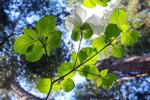
One of the challenges many gardeners face is how to make shady spots look good. Napa County Master Gardeners have some ideas, including flowering native plants.

Many scientists are calling the decline in bugs “the insect apocalypse.” Napa County Master Gardeners are coming up with ways to help bugs, which are at the start of the food chain while we are at the end.
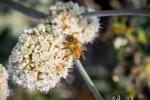
Native buckwheats come in all shapes and sizes, from just a few inches tall and a foot or so across to as much as 8 feet tall and 10 feet across.
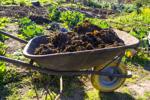
This is the time of year when we start to prepare our soil beds for spring planting. Because Napa County has large rural areas and many househ…
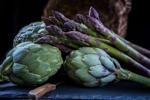
Perennials vegetables give back a lot for relatively little effort.

Master Gardener Penny Pawl shares advice on growing camillias.

Roses grow well in Napa County. Here are tips to help them thrive.
Cindy Watter is a UC Master Gardener of Napa County.
Make your house a home
For the holidays: Get inspiring home and gift ideas – sign up now!









